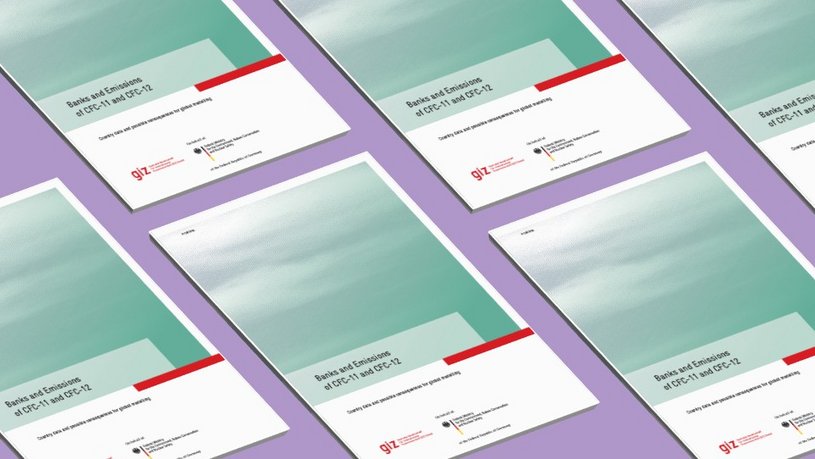This study investigates the currently applied assumptions of global CFC banks models and compares it with data collected in specific countries.
CFCs were widely used as refrigerants and foam blowing agents. During its peak consumption in the 1990s, it is estimated that up to 430 kilo tonnes of CFC (GIZ, 2018) were added to the bank annually. CFCs are ODS and their bank is defined as the amount of substance contained in appliances and other products that have not been released to the atmosphere yet1 Due to the CFC phase-out, accomplished under the Montreal Protocol within non-Article 5 (nA5) countries2 in 1996 and Article 5 (A5) countries in 2010, the CFC bank is not increasing any longer. However, the size of the CFC bank in foam products (and to a lesser extend in refrigeration and air conditioning equipment) is believed to be still considerable.
Several models estimate the remaining CFC bank on a global scale (Ashford et al., 2004) in the Assessment Reports of the Rigid and Flexible Foams Technical Option Committee (FTOC, 2006, 2010, 2014, 2018; GIZ, 2018). Nevertheless, the assumptions of those models, although state of the art in terms of chemical behaviour, often disregard (lack of adequate) recycling practices, resulting in several uncertainties. Thus, the debate on the remaining CFCs in banks, and the resulting emissions, is still ongoing.
This study intends to contribute to the debate by
- Shedding light on individual country’s estimated remaining CFC bank and their handling. The focus are CFC-11 and CFC-12 in building foams.
- Investigating the fit of model assumptions to found practices and carrying out a sensitivity analysis on selected parameters.
This paper is part of the project ‘Management and Destruction of Existing Ozone Depleting Substances Banks’ funded by the German Federal Ministry for Environment, Nature Conservation and Nuclear Safety (BMU) under its International Climate Initiative (IKI) and implemented by the Deutsche Gesellschaft für Internationale Zusammenarbeit (GIZ) GmbH.

